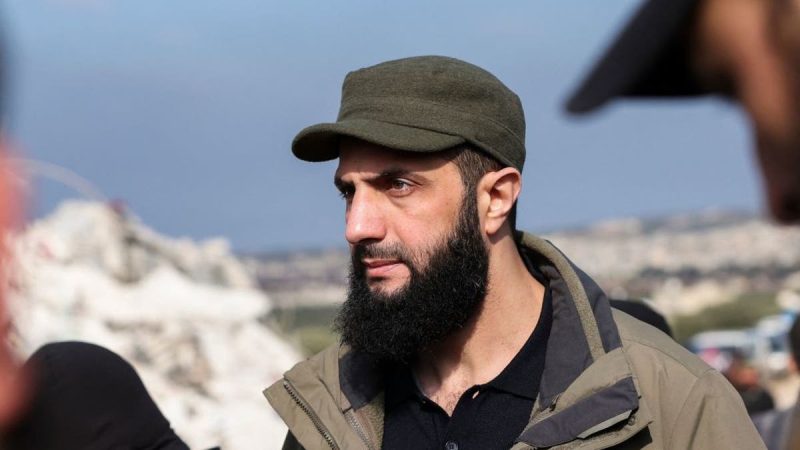The fall of Syria’s President Bahsar al-Assad is a blow to Russia, terror-monger Iran, and their Hezbollah cronies in Lebanon. But Syria’s next chapter is starting with uncertainty. President-elect Trump’s goal is restoring peace to the Middle East – and the road now runs through Damascus.
‘Not our fight,’ Trump stated. Quite canny of him, for in 2019, he wisely left outposts of about 900 U.S. forces both at An Tanf, a junction near Iraq’s border, and along the oil fields at Deir Al Zour, blocking a return of the defeated ISIS caliphate.
Fingers crossed that the end of Assad won’t be the beginning of ISIS 2.0.
Assad was terrible. Remember his use of chemical weapons against his own people? In 2013, the Assad regime launched rockets carrying the deadly nerve agent sarin into the Ghouta district of Damascus, killing more than 1,400 people, according to the U.S. Department of State, and used them again in 2017. Trump ordered airstrikes on Syrian chemical weapons sites with U.S. B-1 bombers, along with France and Britain, in 2018.
‘There is not a single household in Syria that the war has not touched. Praise be to God, today Syria is recovering,’ said Hayat Tahrir al-Sham leader Abu Mohammed al-Golani in his speech at the Umyyad mosque yesterday.
What remains to be seen is if these rebels – who took just 11 days to depose Assad – want to launch a recovery in Syria, or return to their al Qaeda roots. Syria’s economy is weak, unemployment is high and Syria is still coping with the 2023 earthquake that killed 5500 and affected many more. This could go either way.
Uncertain as the situation is, for now, the geopolitics are quite satisfying. Russia’s Vladimir Putin takes a big loss. He couldn’t keep his client Assad in power, and with Aleppo, Damascus and Homs in rebel hands, Russia’s air base at the international airport near Latakia and naval base on the Mediterranean coast at Tartus are more or less on lockdown. Syria was a major investment for Putin and, in a way, his training ground for Ukraine. With Assad gone, it’s all blown up.
As for the Iranians, they’ve lost a member of their so-called axis of resistance. Their supply corridor into Hezbollah in Lebanon is now choked off. Syria was ‘a playground for Iran’s ambitions,’ Golani said, but no more. A senior Iranian running terror militias was killed by HTS forces in Aleppo on Nov. 28. Decimated by Israel and pinned down by U.S. deterrent forces, there was not much Iran could do for Assad.
The bad news? Syria is now in the hands of a UN-designated terrorist group. Golani, age 42, has been a slick operative for years, admiring the 9/11 attacks but carving out his own base in northern Syria after opting not to ally with various al Qaeda leaders. You get the feeling that Golani calculated he’d do better on his own in Syria, instead of paying allegiance to some big-name al Qaeda outsider. It’s a little worrying that he calls himself ‘Golani’ in reference to Israel’s takeover of the Golan Heights in 1967, when his grandfather fled before Israel’s armies.
For now, much depends on how Golani handles his victorious forces. If prudent, he will keep them behaving as liberators. And he will stay away from the Golan Heights, newly reoccupied by Israel Defense Force troops.
Of course, the big concern is keeping a lid on ISIS. In the west, the Syrian Defense Forces, allied with the U.S., are ‘sitting on top of a prison system with approximately 10,000 ISIS fighters incarcerated in it,’ retired Gen. Frank McKenzie told ABC News on Mar. 31. U.S. commanders have warned for years that the camps seethe with resentment. If released, the ISIS detainees and their kin could filter out to strengthen other ISIS groups, potentially increasing the risks of terror attacks in the U.S. and Europe – a ‘whole new chapter of ISIS violence,’ in McKenzie’s words.
My mind is on the U.S. forces in Syria. Although small, they are very capable forces, and closely monitored by U.S. Central Command airpower as part of the enduring ‘defeat ISIS’ mission. U.S. Air Force A-10 Warthogs carried out a low ‘show of force’ flight in Syria on Dec. 3, to shoo enemies away, while others – probably Special Forces – were destroying mortars and armored personnel carriers after a rocket and mortar attack near Military Support Site Euphrates. All year, U.S. air forces have consistently launched airstrikes against both Iran-backed militia teams and at ISIS clusters in Syria.
Hopefully, the departure of Assad is a new beginning. But Syria has a long way to go, and Trump’s team just got yet another crisis to resolve.
The passion of U.S. presidents across party lines is peace in the Middle East. There hasn’t been a single one since Nixon who didn’t strive to his utmost, from Carter’s Camp David Accords through Biden’s frantic attempts at a ceasefire in Gaza. Trump wants peace in the Middle East, too, but the difference is that, given his first term success with the Abraham Accords, he can get it. But that road now runs through Damascus.

